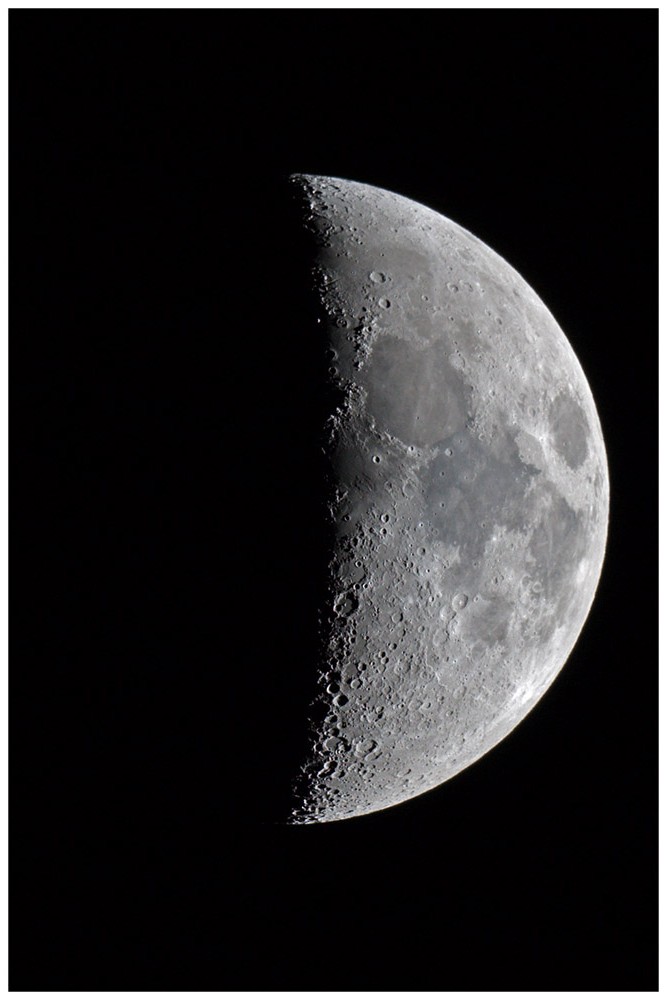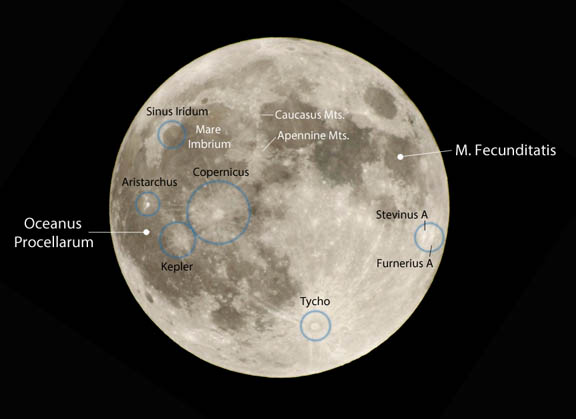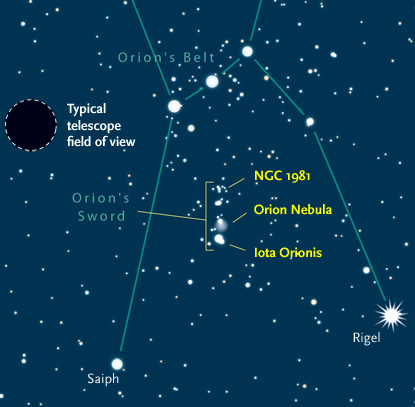
Maybe you just got a shiny new telescope to call your own. Congratulations — you could be on your way to discovering many amazing, far, deep things in the night sky. Although most of them are so far and faint that just locating and detecting them is the challenge! Whether your new scope is a long, sleek tube or a compact marvel of computerized wizardry, surely you're itching to try it out.
"Here are three crucial tips for getting started," advises Alan MacRobert, a senior editor at Sky & Telescope magazine.
"First, get your scope all set up indoors, read the instructions, and get to know how it works — how it moves, how to change eyepieces, and so on — in warmth and comfort. So you don't have to figure out unfamiliar knobs, settings, and adjustments outside in the cold dark.
"Second, take it outside in the daytime and get familiar with how it works on distant scenes — treetops, buildings — to get a good feel for what it actually does. For instance, you'll find that a telescope's lowest magnification (the longest-focal-length eyepiece) gives the brightest, sharpest, and widest views, with the least amount of the wiggles. The lowest power also makes it easiest to find what you're trying to aim at, with that wide field of view. So you'll always want to start off with the lowest power. Switch to a higher power only after you've found your target, got it centered, and had a good first look.
"Also, if the telescope has a little finderscope on the side, daytime is the easiest time to 'align' the finderscope. Point the main telescope at a distant treetop or landmark, center that in the view, and then look through the finderscope. Use the finderscope's adjustment screws to get its crosshairs centered on the same treetop. Then recheck that it's still in the center of the main scope's view.
"Third," he adds, "be patient. Spend time with each sky object you're able to find, and really get to know it." Too many first-time telescope users unconsciously expect Hubble-like brightness and color in the eyepiece — when in fact most astronomical objects are very dim to the human eye. And, our night vision sees almost everything as shades of gray. Much of what the universe has to offer is subtle, and, once again, extremely far away! But the longer and more carefully you examine something, the more of it you'll gradually discern.
On the other hand, the Moon and the naked-eye planets are bright and easy to find! They make excellent first targets for new telescopic observers. Sky & Telescope's This Week's Sky at a Glance has suggestions for both telescopic and naked-eye viewing of the brightest stars and planets.
Here are some suggestions for starting off:
New-Telescope Delight: The Moon
The Moon is one celestial object that never fails to impress in even the most humble scope. It’s our nearest neighbor in space — big, bright, starkly bleak, and just a quarter million miles away. An amateur telescope and a good Moon map can keep you busy forever.

Bob King
The Moon tonight (Dec. 25, 2018) is in its waning gibbous phase and doesn't rise high in the sky until late evening. It'll be up about an hour later each night after that.
You've missed full Moon by three days, but that's a good thing. Full Moon is actually the worst time for telescopic Moon viewing, because its directly sunlit face lacks the shadows that cast mountains and craters into sharp relief. The waxing and waning phases are better, especially for features along the terminator — the lunar sunrise or sunset line. Here you'll see lunar features standing out at their best, as seen in the photo at the top of this page. The terminator moves quite a bit from night to night, revealing new landscapes when the Moon is waxing and then hiding them in darkness when waning.
Planets
Mars is high in the evening sky now just after dark. Look for the brightest orange "star" in the south-southwest. But Mars is currently very far away, on the far side of its orbit from Earth. So it just looks like a tiny, gibbous blob even at high power! Mars is usually disappointing like this. Its next close swing by Earth won't come until October 2020.
Venus is the blazing "Morning Star" in the southeast during early dawn. Even a small telescope will show its dramatic, Moon-like phases (it's currently a very thick crescent, almost half-lit) and the dazzling whiteness of its intensely sunlit cloud cover.
The other bright planets — Mercury, Jupiter, and Saturn — are currently low in the glow of sunrise, where the telescopic viewing is poor, or out of sight behind the Sun's glare. Be patient; all will come around in due time.
More New-Telescope Sights
There's more to the night sky than the nearby Moon and planets, of course. Winter evenings often bring crisp, transparent skies with a grand canopy of stars. But with so many inviting targets overhead, where should you point first?

The familiar constellation Orion climbs the southeastern sky these evenings. In its middle, look for the three-star line of Orion's Belt. It's currently almost vertical in early evening, and it's diagonal (like on the chart at right) late at night.
Just a few degrees south of the Belt (that is, a few finger-widths at arm's length) runs a smaller, dimmer line of stars: Orion's Sword. Within it lies the Orion Nebula, a luminous cloud of gas and dust where stars are forming by the hundreds. It shows pink in most photographs, but dim gray with a hint of green to the human eye. The nebula is plain to see in any telescope once you get pointed at it, and so is the tight quartet of stars near its center, known as the Trapezium. Astronomers refer to the Orion Nebula as Messier 42 (M42), and you'll see it labeled that way on star charts. Located about 1,400 light-years away, it's the closest massive star-forming nebula to Earth.
Dim objects like nebulae are best seen when the sky is moonless and really dark, but again, make the best of the situation you've got.
You can use Orion's Belt as a pointer to other things. Extend its line far upward, past the relatively bright star Aldebaran (the orange-red eye of Taurus, the Bull) and you'll reach the little cluster of stars called the Pleiades. It's about the size of your fingertip at arm's length.
Through binoculars or a telescope at its lowest magnification, the Pleiades cluster shows dozens of stars. Astronomers have determined that the cluster has about 500 in all. Like other star clusters, the Pleiades are held together by their mutual gravity. This one is classed as an open cluster for the stars' relatively uncrowded arrangement. It's nearby as star clusters go, traveling through space as a swarm about 440 light-years away.
Researchers have determined that the Pleiades stars began to shine only about 70 to 100 million years ago. This makes the stars mere toddlers compared to our Sun and solar system, age 4.6 billion years. M45’s youthful suns are astonishingly energetic. Alcyone (al-SIGH-oh-nee), the brightest, is at least 350 times as luminous as our Sun. Like the other bright Pleiads it gleams with an intense blue-white light — a sign that it’s unusually hot and massive.
Next Steps in Astronomy
To find much else in the night sky, you'll need to start learning the naked-eye constellations overhead. They're the key to locating everything fainter and deeper to hunt with binoculars or a telescope — the same way you need to know the continents and countries on a globe of Earth before you can pinpoint a place on the globe like, say, Milan, Italy. For an easy-to-use constellation guide covering the whole evening sky, use the big monthly map in the center of each issue of Sky & Telescope magazine, the essential guide to astronomy (ahem).
You'll also want a good, detailed star atlas (set of maps), such as the widely used Pocket Sky Atlas; a good deep-sky guidebook; and some practice in how to use the maps to pinpoint the aim of your telescope onto a faint something. There are certain key tricks to this — see Using a Map at the Telescope.
For more tips on skywatching and how to get the most out of your scope, see our Observing section and Getting Started section.
Whatever else, stick with it! Nobody is born knowing this stuff. Work your way into the hobby at your own comfortable pace, finding things to know and do and understand and not worrying about everything you don't yet. Life in a big universe is kind of like that.
 0
0









Comments
You must be logged in to post a comment.